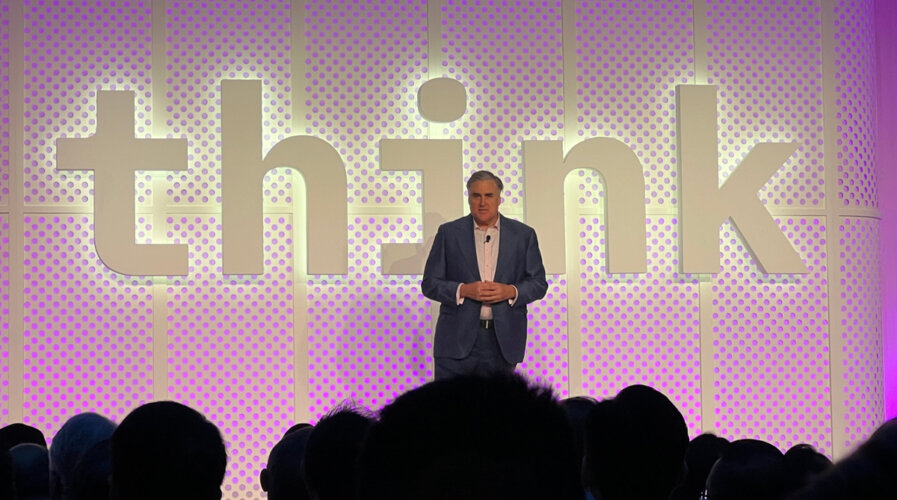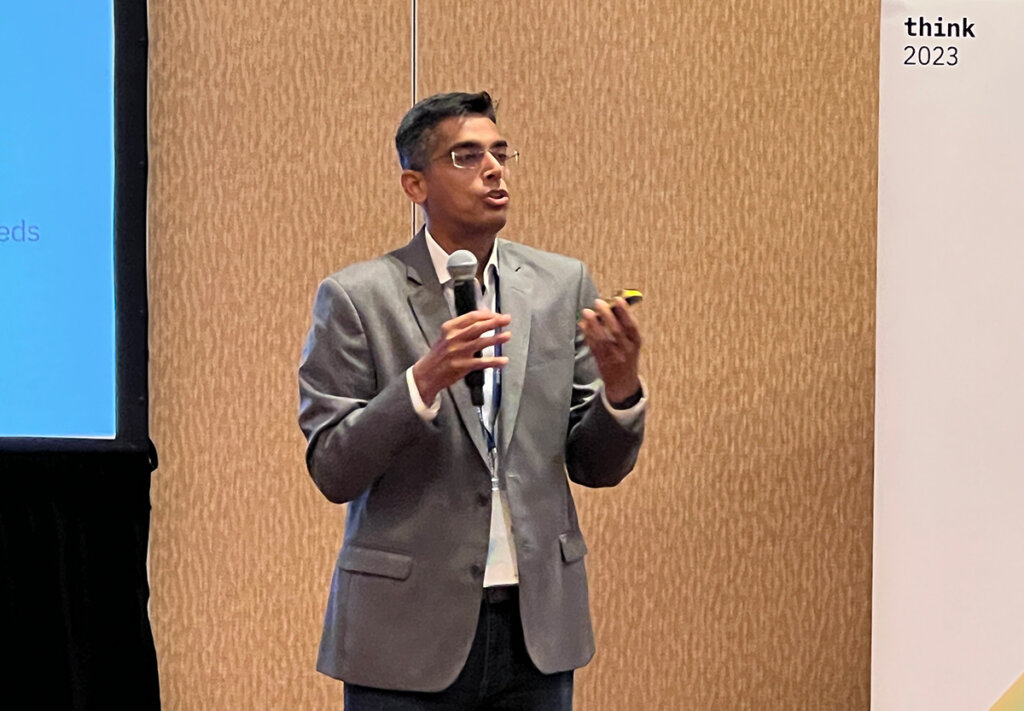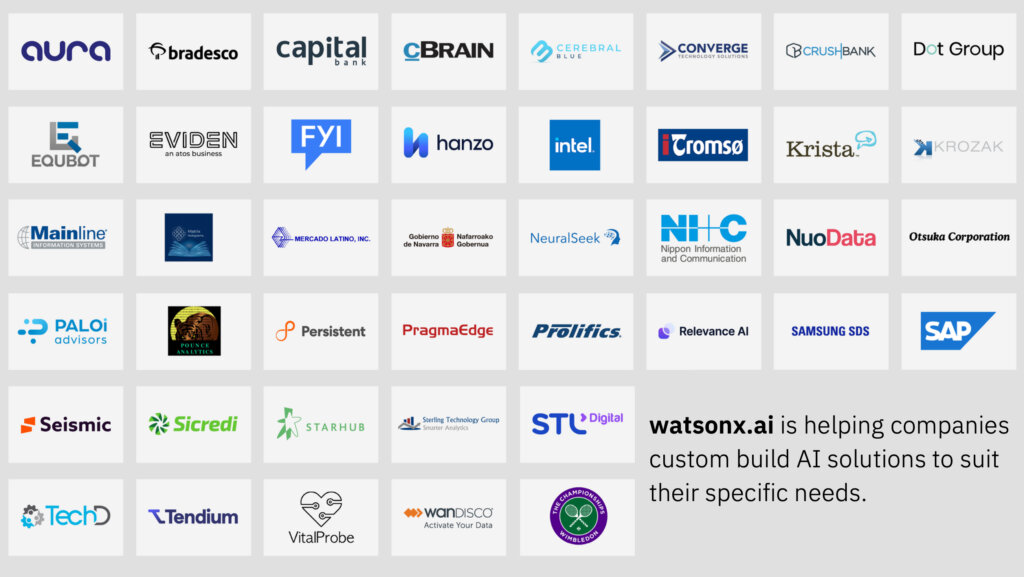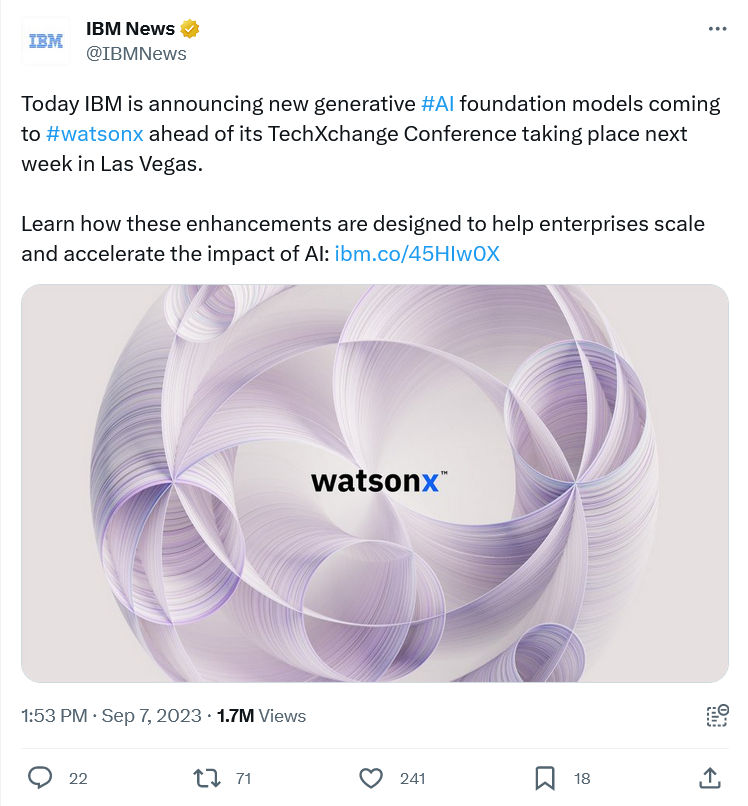
General Manager of IBM Asia Pacific, Paul Burton welcomes delegates to IBM’s annual flagship Think 2023 conference in Singapore.
AI for business: IBM is charting the path with watsonx
- At IBM Think Singapore, the tech giant spoke about its focus on AI for business.
- In particular it focused on watsonx, its suite of AI tools for business.
- IBM predicts rapid growth in complexity and function for business AI over the course of the next decade.
The journey into artificial intelligence (AI) for IBM Corp dates back several decades. The company, commonly known as Big Blue, has pioneered the way, pushing the boundaries of AI technology, especially for business use cases. One of the most significant milestones in IBM’s AI journey came with the development of IBM Watson in 2010, a milestone akin to a moon landings for the then still-burgeoning field.
At that point, for a system like Watson to use natural language processing (NLP) and machine learning to answer questions was a big deal. Watson breathed new life into IBM — a giant company once dependent on its legacy products. At that point in time, IBM knew that AI was a technology that could do for the company what the mainframe computer had done before it — provide an engine of growth and profits for years, even decades.
Fast forward 13 years, and today IBM still stands on the same pedestal, spearheading AI for business. But this time, it’s striving for an advanced branch of the technology — generative AI. At its annual Think conference in Singapore last week, IBM took the opportunity to walk the reporters through watsonx, its services with generative AI capabilities tailored for enterprises and even governments.
Watsonx: AI for business explained
Unlike OpenAI, Microsoft, Google, and others, IBM never got itself into the consumer-facing AI frenzy driven by ChatGPT. IBM’s prowess caters to enterprises in general, including governments. “It’s designed for enterprise and targeted for business domains, to solve real business problems that drive quick gains in productivity,” Sriram Raghavan, VP at IBM Research AI, told reporters during a panel session at IBM Think Singapore.

Sriram Raghavan, VP, IBM Research AI.
Raghavan meant that watsonx empowers organizations to be AI value creators, not mere users. “With watsonx, your business is not limited to just prompting someone else’s AI model with no control over the model or the date.”
watsonx allows users to train, fine-tune, deploy, and govern the data and AI models they bring to the platform. They own completely the value they create. As a cloud-native AI and data platform, watsonx consists of watsonx.ai, watsonx.data, and watsonx.governance.
- watsonx.ai: is a studio for foundation models, generative AI, and machine learning.
- watsonx.data: is a data store built on an open lakehouse architecture.
- watsonx.governance: is a toolkit for responsible AI workflows.

IBM demonstrating ways enterprises can put governance to work using watson.governance
In short, watsonx.ai allows AI developers to harness models offered by IBM and the Hugging Face community to tackle a broad spectrum of AI development tasks. These models come pre-trained and geared to handle various NLP tasks, encompassing question answering, content generation, summarization, text classification, and data extraction.
Future releases will expand the array of IBM-trained proprietary foundation models, facilitating efficient specialization in specific domains and tasks. Meanwhile, watsonx.data helps clients overcome challenges related to data volume, complexity, cost, and governance as they scale their AI workloads.

IBM revealed that 150 business clients have participated in the company’s beta and tech previews. Source: IBM
The platform enables users to seamlessly access their data, whether stored in the cloud or on-premises, through a single entry point. This approach dramatically simplifies data access for non-technical users while ensuring security and compliance. The significance of watsonx.data is that it empowers those non-technical users by granting them self-service access to enterprise-grade trustworthy data within a unified collaborative platform.

watsonx – empowering AI for business.
It also reinforces security and compliance protocols through centralized governance and local automated policy enforcement. Soon, watsonx.data will harness the capabilities of watsonx.ai foundation models to simplify and expedite user interactions with data.
Then there’s watsonx.governance, leveraging IBM’s robust AI governance capabilities to help organizations implement end-to-end lifecycle governance, mitigating risks, and effectively managing compliance with the evolving landscape of AI and industry regulations. The advantage is that watsonx.governance empowers organizations to lead, oversee, and oversee their company’s AI initiatives.
IBM’s AI roadmap
When IBM launched watsonx, the tech giant also unveiled its AI roadmap that spans over a decade, from 2023 to 2030 and beyond. While the goal this year is to expand the enterprise foundation model use cases beyond NLP, IBM foresees 2024 to be the year Big Blue would integrate guardrails throughout the AI foundation model lifecycle and AI governance at the organizational level.
In fact, IBM, according to CEO and chairman Arvind Krishna, believes smart regulation should be based on three core tenets:
- Regulate AI risk, not AI algorithms.
- Make AI creators and deployers accountable, not immune to liability.
- Support open AI innovation, not an AI licensing regime.
“If AI is not deployed responsibly, it could have real-world consequences – especially in sensitive, safety-critical areas. This is a serious challenge we must overcome, and it is precisely why we urge Congress and the Administration to enact smart regulation now,” Krishna wrote in a LinkedIn post dated September 14.
By 2025, IBM believes AI will become more energy and cost-efficient. “In 2025, we will improve the energy and cost efficiency of foundation model training and inference by five times and bring 200 billion over parameter foundation models to enterprises,” the roadmap reads.
In 2027, IBM expects foundation models in production to become scalable. By that year, it will be routinely doubling the number of foundation model parameters in output for the same energy envelope every 18 months. IBM predicts that training and inference will be four times more energy efficient by then than it will be in 2025.
2029 will be an inflection point, according to Big Blue. “AI will support diverse forms of reasoning with explainability and trust. Energy efficiency will increase four times, and operationalized AI models are predicted to be a routine in enterprises.
“Something’s happening in AI…”
READ MORE
- 3 Steps to Successfully Automate Copilot for Microsoft 365 Implementation
- Trustworthy AI – the Promise of Enterprise-Friendly Generative Machine Learning with Dell and NVIDIA
- Strategies for Democratizing GenAI
- The criticality of endpoint management in cybersecurity and operations
- Ethical AI: The renewed importance of safeguarding data and customer privacy in Generative AI applications






